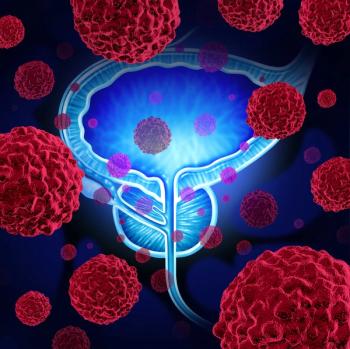
Oncology NEWS International
- Oncology NEWS International Vol 8 No 6
- Volume 8
- Issue 6
Biologics Research Promises ‘Synergistic’ Cancer Therapy
ALEXANDRIA, Va-“From the graveyard of dead biologic agents that over the last decade have failed to deliver on their apparent promise of large clinical benefits will rise new generations of therapeutics much more powerful than those presently available,” said David Parkinson, MD, vice president for clinical research, Novartis Pharmaceuticals, East Hanover, NJ.
ALEXANDRIA, VaFrom the graveyard of dead biologic agents that over the last decade have failed to deliver on their apparent promise of large clinical benefits will rise new generations of therapeutics much more powerful than those presently available, said David Parkinson, MD, vice president for clinical research, Novartis Pharmaceuticals, East Hanover, NJ.
A decade from now, it will not be surprising to see biologics working synergistically with currently used chemotherapies and radiological therapies to dramatically enhance outcomes, he said at a plenary session of the Association of Community Cancer Centers 25th Annual Meeting.
Until recently, biologic and chemotherapeutic approaches were considered to be separate fields, with research in biologics emphasizing immune processes. More recently, however, interest has begun to broaden into other biologic mechanisms involved in cancer, including differentiation and angiogenesis. Work now focuses on cytokines, antibodies, differentiation-inducing agents, and other possibly therapeutic entities.
The failures of the last 10 years have also sharpened certain social decisions that society faces as research goes forward, Dr. Parkinson said.
Initially Promising Agents
A number of initially promising biologic agents, such as IL-2 , for example, produced a few cases of long-term survival, a response rate of less than 10%, and very severe toxicity. There might be some 5-year survival advantage for IL-2, he said, but the results are pretty gray after 15 years of clinical trials.
For adjuvant interferon, some clinical trials have shown some clinical benefit, even considering the quality of life issues the agent imposes, he noted, but the significant toxicities are definitely anegative factor. In addition, the long periods needed to run trials have complicated evaluation of these therapies, he said. Whether the agents benefits justify the toxicities experienced by patients is a question that society and not science must answer, he commented.
In general, Dr. Parkinson said, the nonspecific cellular therapies tried in the past do not appear to have provided proven clinical benefit. The heterogeneity of both tumors and patients, as well as an incomplete understanding of the mechanisms of response and resistance, defeated the early biologics, he noted. The future of more useful biologic therapies lies in the far more detailed understanding of the cellular mechanisms of individual patients that past, apparently unsuccessful, research has made possible.
Today, instead of grouping therapies into categories based on their technological basis (eg, chemotherapy vs biologics), researchers are grouping them based on their strategic relationship to the evolution of cancer. Some of the experimental therapies use what Dr. Parkinson called a direct approach, acting against the cancer cells themselves. Others, which he termed indirect approaches, target elements of the microenvironment in which the cancer cells develop and multiply.
Therapies using these two approaches might combine agents drawn from either the traditional arsenal of chemotherapy and radiation or the newer one of biologics, he said. For example, Herceptin [trastuzumab], an antibody agent, synergizes with conventional chemotherapy agents for breast cancer to produce a better result than either can alone.
Important new targets of research include signal inhibition, targeted therapeutics, and immunotherapy, Dr. Parkinson said. Especially promising are apoptosis and angiogenesis inhibition, he observed.
A new generation of therapeutics directed at programmed cell death is under development. Using antisense agents to shut down any gene in a cancer is theoretically possible, he said, but is very difficult in vivo and extremely expensive, currently costing more than $10,000 a course per patient.
Angiogenesis is an exceedingly important target, he continued. Exploiting a process common across all cancers and perhaps also leukemias, angiogenesis inhibitors are potentially very appealing products for pharmaceutical companies that have previously done relatively little work developing traditional anticancer agents, each one of which has only a small potential market.
But the possibility of producing products that could be applicable across all cancers has inspired many companies to work on a number of agents that are currently in development or in trials. The dramatic increase in understanding the biology of angiogenesis over the last 10 years has also helped produce this enormous outpouring of new agents, he said.
Two Major Lessons
The past decade of work on biologics has yielded two major lessons, Dr. Parkinson concluded. First, he said, to create effective therapies, we need to understand the biology of the target, including the heterogeneity of the tumors and patients as well as the factors that contribute to response, resistance, and toxicity. Second, we need more efficient clinical trials that provide more detailed answers about fewer, more homogeneous, patients, and clear answers to well-defined questions.
As to the future, Dr. Parkinson sees more success attacking more relevant targets. Getting there, however, will require improved clinical trials.
Articles in this issue
over 26 years ago
Opioids Are Often Ignored for Treating Neuropathic Painover 26 years ago
Study Suggests Short Time Interval for Ovarian Cancer Screeningover 26 years ago
Your Strengths, Market’s Demands Dictate Marketing Strategiesover 26 years ago
First-Line Irinotecan Effective in Advanced Colorectal Cancerover 26 years ago
Doctor Ponders Popularity of Alternative Medicineover 26 years ago
Can Physicians Be Held Liable for Alternative Medicine?over 26 years ago
Tips on Marketing Your Oncology Practice to Patientsover 26 years ago
Patient Care Costs of Clinical Trials May Be Less Than Standard Careover 26 years ago
Sentinal Node Biopsy Finds 98% of Metastic Colon Cancersover 26 years ago
Church-Based Project Provides Cervical Cancer Screening for LatinasNewsletter
Stay up to date on recent advances in the multidisciplinary approach to cancer.

























































































